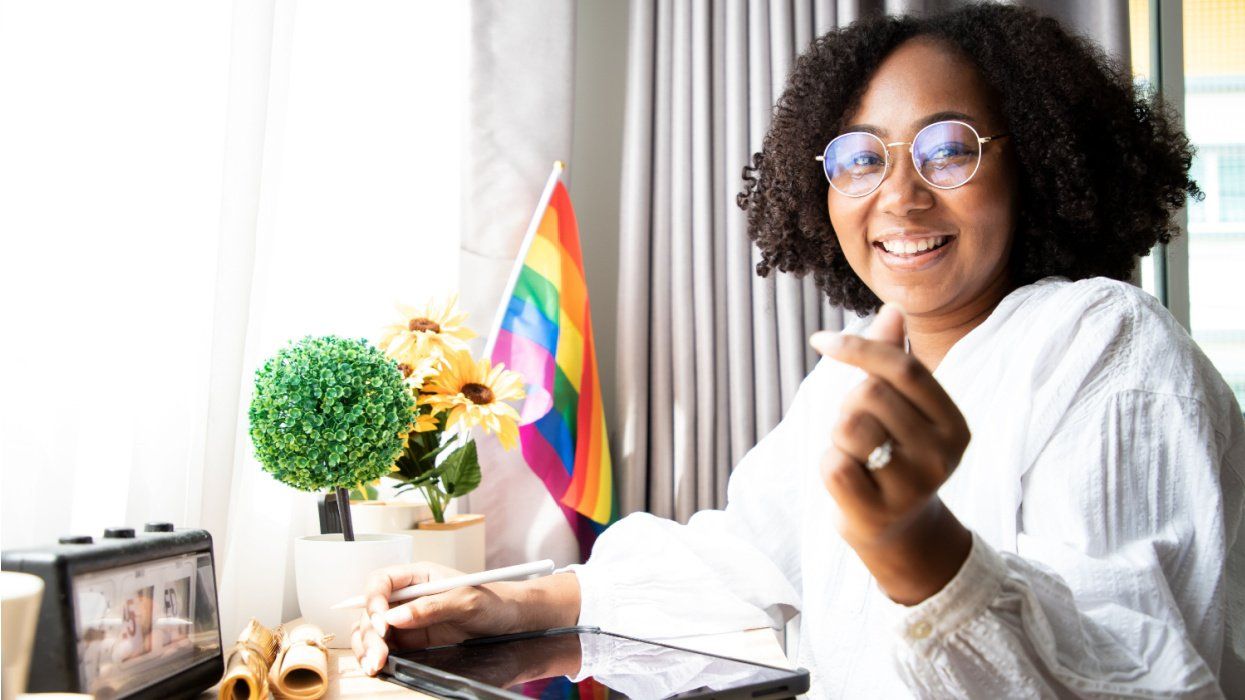Diversity, equity, and inclusion programs in the workplace and elsewhere are being demonized by the right — but they remain not only the right thing to do but good business as well.
One of the factors driving this home is a new report from the Human Rights Campaign Foundation. It shows U.S. workplaces have made great strides toward becoming more welcoming and inclusive for LGBTQ+ employees — but there is still much to be done.
For the report, “Equality Rising: LGBTQ+ Workers and the Road Ahead,” the foundation, HRC’s educational arm, surveyed more than 3,000 adult part- and full-time workers across the nation, about two-thirds of them LGBTQ+, the remainder straight and cisgender. The survey was the fourth one the HRC Foundation has conducted regarding the workplace climate since 2008.
The results showed that more LGBTQ+ employees than ever are out to at least one person on the job and that many companies are prioritizing inclusivity — and yet many queer workers feel discomfort.
How Diversity, Equity, and Inclusion Leads To Better Business

Eighty-four percent of LGBTQ+ workers reported that they’re out to at least one person in their current job — substantially higher than in the 2018 survey, when this figure was 54 percent. However, LGBTQ+ workers on average are half as likely to be out to their human resources department than to colleagues on their team. This could reflect a lack of trust in HR departments or lack of opportunity to report.
Fifty-one percent of LGBTQ+ workers have withheld their identity at least one job in their lifetime due to privacy concerns, while 40 percent have done so due to fear of being stigmatized or facing violence at work. Other reasons for not being out include fear of losing status and fear of discrimination.
However, some employers that wish to create an inclusive environment for LGBTQ+ workers may simply not know who those workers are. “In order to ensure that all employees really feel safe and seen, there have to be concrete institutional diversity, equity, and inclusion practices,” says RaShawn “Shawnie” Hawkins, senior director for the HRC Foundation’s workplace equality program.
This could start with “something as simple as capturing sexual orientation and gender identity information in your HR systems run along with the rest of the demographic information that you get for employees, like marital status and where they live,” she tells The Advocate.
“You can’t really create comprehensive programs for inclusion if you’re unaware of who those people are and what their unique needs are. So identifying your employee base first is the foundation of any good DEI strategy.”
Of course, employers have to make it clear that information won’t be used in a discriminatory fashion. And they have to show their commitment to DEI is more than skin deep.
Companies that want to create an inclusive environment may start with recognizing special occasions such as LGBTQ+ Pride Month or Black History Month, or establish support groups for workers of various identities. “A lot of DEI spaces look for affinity months and want to celebrate employees by throwing a party and having a festive time, and although that’s great and we want to celebrate joy in our differences, it’s more than that,” Hawkins points out.
Employers need to stay informed about what’s going on in the political sphere in relation to LGBTQ+ rights or issues affecting members of other historically marginalized populations — for instance, laws restricting gender-affirming health care or the recent Supreme Court ruling striking down race-based affirmative action programs, she says.
“There is so much that’s happening in the public discourse. … And so to be an effective DEI department, you have to be aware of those things,” Hawkins says. “And know that it can come into the workplace, and it will.”
When the Supreme Court struck down Roe v. Wade and states became free to ban or severely restrict abortion, some employers began helping workers with travel expenses if they needed to go out of state for the procedure. Employers could do the same thing with gender-affirming care, she notes, for workers and their dependents.
Employers should be aware that workers who aren’t part of the LGBTQ+ community may have family members who are, says Shoshana Goldberg, director of public education and research at the HRC Foundation. Given that the various state laws that have been passed to ban or restrict gender-affirming care specifically affect minors, companies need to keep up on those policies and do what they can to keep both adults and children safe, she says.
Having a DEI program that works also means being aware of the intersections of race, gender, orientation, and other identities, Hawkins adds, along with being aware that some members of a group are more marginalized than others.
In the HRC Foundation survey, a majority of workers, both LGBTQ+ and non-LGBTQ+, said their employer valued inclusivity. But workers who are LGBTQ+ were less likely to feel that way than those who are not, and transgender and nonbinary workers less so than LGBTQ+ employees overall.
“We're talking about the LGBTQ+ community at large, but our trans and nonbinary community members are really at the center of a lot of the vitriol that we’re having right now,” Hawkins says. “You can’t say we have great policies and we’re inclusive for the LGBTQ community as a whole if you’re also not centering those most marginalized within that community.” She’s glad the report has highlighted that.
Goldberg seconds that. “If [a DEI program] is not reaching the full LGBT community and it’s only like the L and the G or maybe the B, we’re missing a very large component of it, particularly at a time when we see that the trans and nonbinary [population] is largely under attack,” she says.
In the report, “we saw, for example, trans or nonbinary people were more likely than LGBTQ people as a whole to ever been fired or passed for a promotion,” Goldberg notes. Many of those surveyed said they saw their company doing little or nothing for trans and nonbinary workers.
Being inclusive, not just in word but in action, is good for business, both Hawkins and Goldberg point out. For one thing, offering a safe and welcoming workplace helps attract employees and keeps them motivated, productive, and not distracted by having to stay closeted. Also, many consumers say a company’s support for diverse populations figures in their buying decisions.
“We hear, like, ‘we don’t want to bring politics into the workplace,’” Hawkins says. “Well, this isn't politics. This is people. These are your employees. These are your consumers. They want to make sure that they’re giving their time, talent, and treasure to an organization that believes in them and believes in their existence, and employers now more than ever have to really be vocal and double down on that,” Hawkins says.
These considerations are becoming even more important as new generations come into the workplace, they say. “We are increasingly seeing, particularly among the younger generations, they want to work for companies that share their values or they want to purchase from companies that not only share their values but really live by their values,” Goldberg says. One of their main values is equality, and these generations are going to be the majority of the workforce by 2030 or 2040, she says. This includes not only LGBTQ+ people but allies.
“DEI is not just a moral good, but it’s good for business,” Hawkins says.
- Former Students Reveal Ron DeSantis Was a Problematic High School Teacher ›
- North Carolina Senator Thom Tillis Censured by GOP For Backing LGBTQ+ Rights ›
- Spider-Verse Artists Describe 'Unsustainable' Working Conditions ›
- Meet the Diverse Crew of NASA's First Moon Mission in 50 Years ›
- Hannah Waddingham Dishes on LGBTQ+ Tributes in X-Mas Special ›


















































